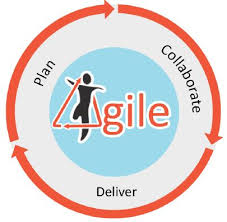Updated June 21, 2023
Introduction to Agile
Agile is the ability to adapt or to create and respond to change. It means understanding the changes and uncertainty in the environment and adapt itself accordingly. Keeping this thought in mind, software developers build Agile to overcome the drawbacks of other software development models.
Agile software development is a combination of methodologies and technology. It is a collection of software development methods where requirements and solutions evolve through collaboration between self–organizing cross-functional teams. It is based on the values and principles mentioned in the Manifesto for Agile Software Development. It focuses on the people and how they work as a team. Teams can judge how they are going to do things on their own.
Understanding
It builds software incrementally in short periods called iterations of about 1 to 4 weeks so that the development process can be changed or modified according to the changing needs. It does not produce or develop the product in a single pass. Instead, it breaks the project into multiple bits of user functionality called user stories, prioritizes them, and then delivers them individually.
It is based on 12 principles mentioned in the Agile Manifesto:
- The highest priority is customer satisfaction from beginning to end to provide valuable software.
- It permits late changes in the requirements during development.
- Delivers working software at regular intervals from a few weeks to a few months.
- Developers and business people must work cooperatively daily throughout the project.
- Projects must be built around motivated individuals. Support and the required environment must be provided, and they must be trusted to get the job done.
- A face-to-face conversation is the most effective and efficient way to convey information to and within a development team.
- Working software is the primary measure of progress.
- It promotes sustainable development. The developers, users, and sponsors should be able to maintain a constant pace indefinitely.
- Giving continuous attention to technical excellence and good design enhances agility.
- Simplicity- the art of maximizing the work not done- is essential.
- The best requirements, architectures, and designs emerge from self-organizing teams.
- The team reflects on becoming more effective and then adjusts its behavior regularly.
How does it make Working so Easy?
It uses some methodologies that help to develop software easily, efficiently, and as quickly as possible.
Some popular methodologies are:
- Adaptive software development (ASD)
- Dynamic systems development method (DSDM)
- Extreme programming (XP)
- Rapid application development (RAD)
- Scrum
- Scrumban
- Disciplined agile delivery (DAD)
- Agile modeling
- Kanban
Agile Software Development Lifecycle
Given below is the agile software development lifecycle:
- Concept: In this phase, projects are envisioned and prioritized.
- Inception: In this phase, team members are identified, funding is analyzed, and initial requirements are discussed.
- Iteration: The developing team works to deliver the software based on the changing requirements of the stakeholders and feedback.
- Release/Transition: Internal and external testing, documentation development, QA testing, and final release of the solution into production.
- Production: In this phase, ongoing support is provided.
- Retirement: In this phase, activity is known as system decommissioning or system sunsetting, i.e., removing a system release from production.
Top Agile Companies
Many companies use an agile model for their development process rather than traditional models like a waterfall. It is gaining success due to its adaptability feature, i.e., accommodation of the changes in the requirements in the middle of the development process. As mentioned above, it requires a framework like Scrum or scrumban and many more.
Many top companies have started using Agile Scrum, and it transformed their working style:
1. IBM
IBM (International Business Machines) is one of the biggest names in technology and is world-famous for creating computer hardware, middleware, and software. IBM offers its management software called IBM Rational Team Concert which incorporates an agile development environment. Agile Scrum helped greatly in improving its business operations; hence, improvements in various metrics like defect backlog and maintenance were witnessed.
2. Google
Google is a big name in the tech field. It is the second-biggest tech company in the world. Google continuously updates many applications, such as Google Maps, Gmail, and many more, before bringing them to users. This is somewhat possible by the Agile-based mindset.
3. 3M
3M is an American Manufacturer that manufactures industrial safety, health care, Electronics, and consumer products. Initially, it used a traditional Waterfall method for software development, but this method faced several hurdles, especially in cost reduction and speed enhancement. So they installed Agile with Scrum, which helped them greatly in the development process.
4. ANZ
Australia and New Zealand Banking Group is one of Australia’s largest banks. It adopted Agile with Sprint Framework. After using Agile, they have the agility to release new features easily every month.
Advantages
- Multiple opportunities for stakeholder engagement
- Transparency throughout the project
- Fast, early delivery
- Costs can be predicted
- Allows changes in the middle of development
- The process consists of one to four-week iterations
- High quality
Required Skills
- Technical familiarity and training
- Organizational skills
- Conflict facilitation
- Critical and creative thinking
- Communication skills
- Automation skills
Why Should we Use it?
- Increased client satisfaction
- Lower cost
- Ensures changes can be made easily throughout the development process
- Keeps project transparent to clients, developers, and management
- Frequent delivery
Scope
- The market is constantly changing, and requirements in every field change, so traditional project development techniques cannot work efficiently. Instead, agile can be used in every aspect of the organization, not only in projects.
- It reduces the documentation necessary for the traditional models, hence reducing time to develop and incorporate changes that motivate organizations to opt for the agile model, which will increase the jobs and career opportunities shortly.
- So it has a great scope in the future where the whole organization would run on this mindset.
Who is the Right Audience for Learning this Technology?
- As you know, “Change is only constant”.
- It is present in every aspect of life, so this technology can be learned by any organization working in teams and aims to deliver an efficient and early product to customers to provide utmost satisfaction.
- People having basic Knowledge of software development concepts like requirements, coding, and testing are efficient learners of these technologies.
How will this Technology help you in Career Growth?
- Agile professionals are in high demand the top companies like IBM, Dell, HP, and many more organizations.
- The salaries for agile professionals typically range from $107,000 to $126,000, or it can increase as per individuals’ skillset and certification.
Conclusion – What is Agile?
The model must select according to the needs of the projects, but it provides advantages over traditional models. It keeps customer satisfaction as its priority and hence helps deliver the final product faster while accommodating all changes, whether in the starting or in any phase of development. There is a huge scope for Agile in the future as all organizations will work with this mindset, and many more job opportunities will open. Hence learning this technology would help you in your career growth.
Recommended Articles
This has been a guide to What is Agile? Here we discussed the working, skills, scope, career growth, and advantages of Agile. You can also go through our other suggested articles to learn more –





